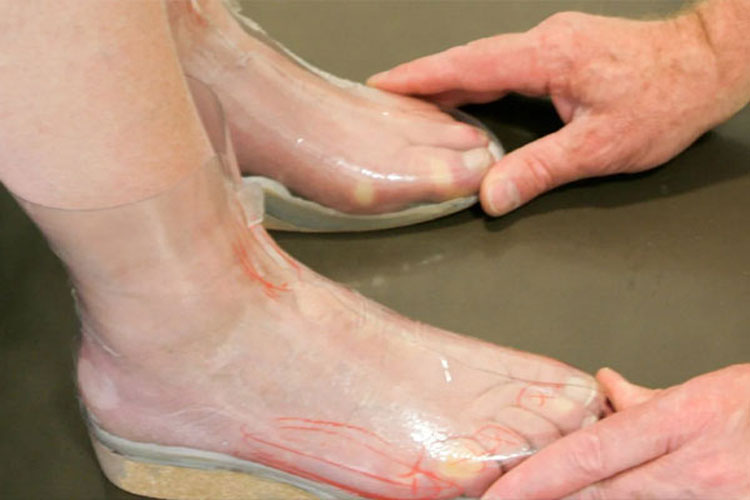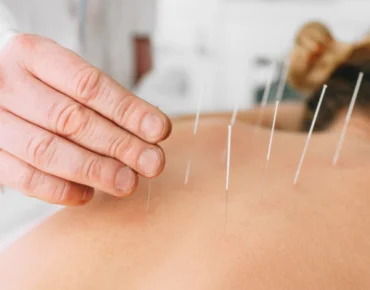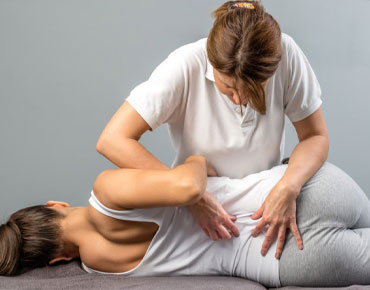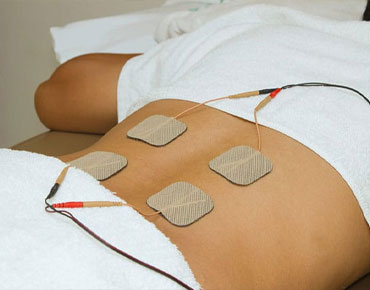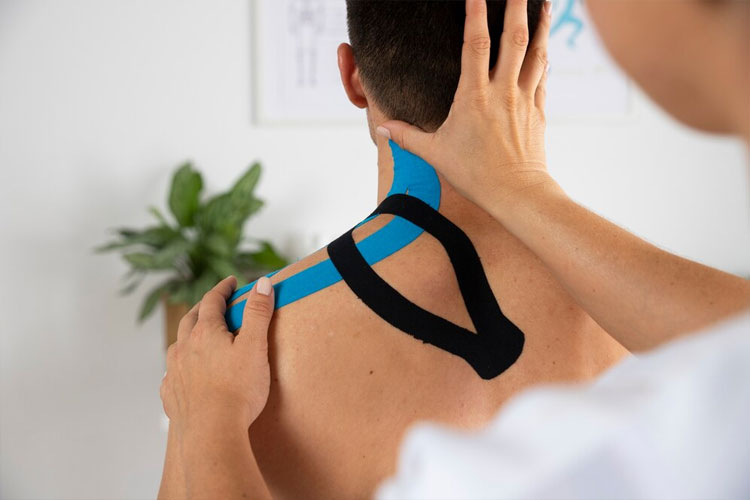
MindBody Physiotherapy & Wellness Clinic
- 107 Hawthorn Way Unit 6, Leduc, AB T9E 0B1
- Mon to Fri 9:00am to 6:00pm
-
Call us anytime
+1 (587) 468-1818
-
Write a mail
info@mindbodyphysio.ca
- Book Appointment
Blog Details
 Sat Jun 17
Sat Jun 17
An Introduction to Cupping Therapy | How Often Can You Do Cupping?
Are you curious about an ancient therapy that involves cups and suction? Look no further than cupping therapy! This traditional alternative practice, similar to acupuncture, has been around for centuries and is rooted in the ancient cultures of Egypt, China, and the Middle East. But what exactly is cupping therapy?
Cupping therapy, an alternative medicine technique, involves placing cups on the skin to create suction. Acupuncture therapists use this method to improve blood flow and rid patients' bodies of toxins. This practice is believed to promote healing and offers potential health benefits that have gained attention in recent years.
So, how often can you do cupping in alternative medicine? Stay tuned as we delve into this intriguing topic and explore the wonders of cupping therapy, an acupuncture technique. Get ready to uncover a world where ancient traditions meet modern wellness practices! Research and rest are key.
Types of Cupping Therapy and Their Unique Benefits
Dry Cupping
Dry cupping is one of the most common types of acupuncture therapy. It involves using suction cups without making any incisions on the skin. The cups, typically made of glass, bamboo, or silicone, are placed on specific areas of the body during a dry cupping session. This creates a vacuum by removing air inside them.
The benefits of dry cupping include:
- Improved blood circulation: The suction created by therapeutic cupping methods helps to increase blood flow to the treated area, which can promote healing and reduce muscle tension. Modern cupping treatment has been found to be effective in improving blood circulation.
- Alternative therapy: Many patients find that dry cupping, an alternative therapy, helps to alleviate pain, especially in conditions like back pain, neck pain, and migraines. The suction force created during the therapy promotes sweating and provides pain relief.
- Therapeutic cupping, also known as modern cupping, is a cupping treatment that uses different cupping methods. The gentle pulling sensation from the cups can induce a state of relaxation and relieve stress.
Wet Cupping
Wet cupping is a specialized form of cupping therapy that involves creating small cuts on the skin before applying the suction cups. This technique aims to draw out small amounts of blood from the body along with toxins and impurities, increasing sweating frequency in patients.
The benefits of wet cupping include:
- By promoting the release of sweat and removing stagnant blood and toxins from the body, wet cupping can enhance overall detoxification for patients. This can be achieved through the frequency of treatments.
- Improved energy flow: Wet cupping is believed to restore balance in your body's energy pathways, promoting better sweat and patients frequency.
- Relief for patients with acne, eczema, and respiratory issues: Some patients use wet cupping as a complementary treatment to alleviate symptoms.
Fire Cupping
Fire cupping is a popular type of cupping therapy that uses heat to create a vacuum inside the cups before placing them on the skin of patients. Traditionally, this technique involved heating up glass cups using an open flame or burning cotton balls soaked in alcohol. The frequency of this therapy varies depending on the needs and preferences of patients.
The benefits of fire cupping include:
- Deep tissue massage: The heat and suction from fire cupping can provide a deep tissue massage-like effect, helping patients to release sweat, tension, and knots in the muscles with increased frequency.
- Improved circulation in patients: Fire cupping stimulates blood flow, which can enhance oxygen and nutrient delivery to the treated area, increasing sweat frequency.
- Relaxation and stress relief: Similar to dry cupping, fire cupping induces relaxation by activating the body's parasympathetic nervous system. This technique is especially beneficial for patients who sweat excessively or have a high frequency of sweating. Fire cupping can help alleviate symptoms associated with excessive sweating, such as discomfort and embarrassment. Additionally, fire cupping has been found to be effective in reducing sweat production in patients with hyperhidrosis.
The Science Behind Cupping Therapy: How It Works
Cupping therapy has been gaining popularity in recent years as a natural alternative for various health issues. But have you ever wondered how it actually works to promote sweat and increase the frequency of treatment?
Increased Blood Circulation and Suction Force
One of the key principles of cupping therapy is creating negative pressure inside the cups to increase blood circulation and promote healing. When the cups are placed on the skin, they create a suction force that draws the underlying tissues upward, stimulating sweat and increasing the frequency of oxygen and nutrients reaching the treated area.
Imagine your back covered in cups, creating a vacuum effect that increases sweat and pulls your skin upwards. This stimulates blood flow, improving the frequency of oxygen and nutrients reaching your muscles. As a result, cupping therapy can relieve muscle tension, promote relaxation, and enhance overall well-being.
Fascial Restrictions and Lymphatic Drainage
Apart from enhancing blood circulation, cupping therapy also targets fascial restrictions—a network of connective tissue that surrounds muscles and organs. The suction created by the cups helps release these restrictions, allowing better movement, flexibility, and sweat frequency.
Cupping therapy promotes lymphatic drainage and helps with detoxification by stimulating lymphatic flow. By applying negative pressure to specific areas of your body, cupping can aid in the removal of excess sweat and increase the frequency of detoxification.
Triggering an Inflammatory Response
While it may sound counterintuitive, cupping therapy can trigger a localized inflammatory response in your body, causing you to sweat. Don't worry—it's not necessarily a bad thing! This controlled inflammation actually stimulates healing processes within your body and can be done with varying frequency.
When the cups are applied to your skin, they cause microtrauma—tiny injuries that prompt your body to initiate its natural healing mechanisms. These include increased blood flow and sweat frequency to the affected area, release of growth factors and cytokines, and recruitment of immune cells. As a result, cupping therapy may have analgesic effects, helping to relieve pain and promote tissue repair.
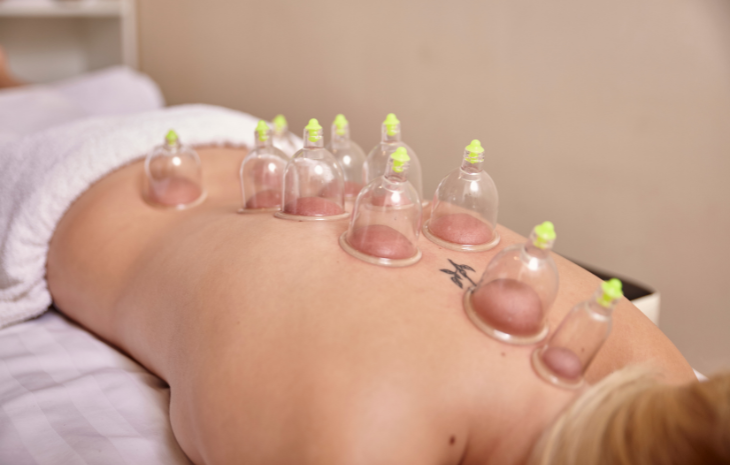
The Sodium Chloride Effect
Another interesting aspect of cupping therapy is the use of sodium chloride (salt) to create a more effective suction and enhance treatment outcomes. By applying a small amount of salt solution to the skin before placing the cups, practitioners can improve the frequency and quality of sweat.
The combination of salt and suction in therapeutic cupping creates an osmotic effect that draws fluid from your tissues into the cups. This cupping treatment can help reduce swelling and inflammation while promoting detoxification through sweat glands. Cupping marks may appear as a result. To maximize the benefits, it is recommended to determine the ideal cupping frequency for your needs.
Frequency Guidelines for Cupping Therapy: How Often Can You Do It?
Individual Needs and Goals
The frequency of sweat sessions can vary depending on your individual needs and goals. Unlike a one-size-fits-all approach, cupping therapy is tailored to suit each person's unique circumstances. Whether you're seeking general wellness or targeting specific conditions or injuries, finding the ideal sweat cupping frequency is crucial.
General Wellness and Relaxation
For those looking to promote overall well-being and relaxation, having a cupping session every 1 to 2 weeks is generally recommended. This regular frequency allows your body to experience the therapeutic benefits of cupping without overwhelming it. By spacing out your sessions in this manner, you give your body ample time to recover and respond positively to the sweat-inducing treatment.
Specific Conditions or Injuries
If you're using cupping therapy to address particular conditions or injuries, a higher frequency of sessions may be necessary initially. In such cases, more frequent sessions per week might be required to effectively kickstart the healing process and induce sweat. For instance, if you're dealing with chronic pain or muscle tightness, scheduling two to three sessions per week could provide significant relief.
However, once initial progress has been made with therapeutic cupping and symptoms start improving, you can transition into maintenance sessions for cupping treatment as needed. These maintenance sessions are designed to keep your body in balance and prevent any relapses or setbacks. Your practitioner will work closely with you during this phase to determine the appropriate frequency based on your progress and ensure a successful sweat therapy experience.
Consultation with a Qualified Practitioner
To ensure that you're following an optimal cupping therapy schedule for your specific needs, it's essential to consult with a qualified practitioner. They have the expertise and knowledge required to assess your condition accurately and provide personalized recommendations on the frequency of sessions and how to manage sweat during the therapy.
During your consultation, they will consider various factors such as the severity of your sweat condition, age, duration of treatment needed per session (typically ranging from 5 minutes to an hour), and any other relevant considerations. By seeking professional guidance, you can maximize the benefits of cupping therapy for sweat while minimizing the risk of overdoing it.
Exploring the Potential Health Benefits of Cupping Therapy
Cupping therapy, a form of alternative medicine, has gained popularity in recent years for its potential health benefits, including promoting sweat. While it may seem unconventional, this ancient practice involves placing cups on the skin to create suction and stimulate sweat production. Let's delve into some of the potential advantages that cupping therapy offers for sweating.
Pain Management and Musculoskeletal Conditions
One of the primary reasons people turn to cupping therapy is for pain relief, especially in musculoskeletal conditions. The suction created by the cups helps increase blood flow to the affected area, promoting healing and reducing discomfort. This technique has shown promising results in alleviating back pain, sports injuries, and other chronic pain issues.
Improved Circulation and Reduced Inflammation
Cupping therapy can also enhance blood circulation throughout the body. By creating suction on specific skin areas, it stimulates blood vessels and encourages a healthy flow of oxygenated blood. This improved circulation can aid in reducing inflammation and promoting overall well-being.
Relaxation and Stress Reduction
In addition to physical benefits, cupping therapy is known for its relaxation properties. The gentle pulling sensation experienced during a cupping session can help relax tense muscles and relieve stress. Many individuals find this practice soothing and often report feeling more relaxed after a session.
Respiratory Conditions: Asthma and Bronchitis
Research suggests that cupping therapy may be beneficial for certain respiratory conditions such as asthma and bronchitis. By targeting specific points on the chest or back with cups, this therapy aims to improve lung function and alleviate symptoms associated with these conditions. However, further studies are needed to fully understand its effectiveness.
Complementary Treatment for Various Health Issues
While scientific research on cupping therapy is still limited, it shows promise as a complementary treatment option for various health issues. It is important to note that cupping should not replace conventional medical treatments but rather be used alongside them. Many individuals have reported positive effects, but individual experiences may vary.
Side Effects and Cupping Marks
Like any therapeutic treatment, cupping therapy may have some side effects. The most common side effect is temporary cupping marks on the skin, which are circular bruises caused by the suction. These marks typically fade within a few days to a couple of weeks. It is crucial to consult with a qualified practitioner who can ensure proper technique and minimize potential risks.
Embracing Cupping Therapy as a Holistic Treatment Approach
Cupping therapy, often used in conjunction with other holistic treatments like acupuncture or massage therapy, has gained popularity as an alternative and complementary medicine approach. It can be integrated into a comprehensive wellness plan to address physical, mental, and emotional well-being. This ancient technique involves placing cups on the skin to create suction, promoting blood flow and stimulating healing.
One of the key benefits of cupping therapy is its ability to promote self-care. By embracing this holistic treatment approach, individuals are encouraged to take an active role in their own health. Cupping therapy empowers patients by giving them a sense of control over their well-being journey.
Many people find cupping therapy to be a relaxing and rejuvenating experience that supports their overall wellness journey. The gentle suction created by the cups helps release tension from muscles and tissues, providing relief from pain and promoting relaxation. Patients often report feeling lighter and more energized after a cupping session.
In traditional Chinese medicine, cupping therapy is believed to help balance the flow of Qi (pronounced "chee"), or vital energy, within the body. By targeting specific acupoints or areas of concern, cupping can help alleviate various conditions such as muscle soreness, respiratory issues, digestive problems, and even stress-related symptoms.
The ideal cupping frequency depends on individual needs and goals. Some patients may benefit from regular weekly or bi-weekly sessions for chronic conditions or ongoing support. Others may find monthly or quarterly sessions sufficient for maintenance or preventive care. It is important to determine the ideal cupping frequency based on individual requirements.
To maximize the benefits of cupping therapy, it's essential to consult with a trained therapist who specializes in this technique. They will assess your unique situation and develop a personalized treatment plan tailored to your needs.
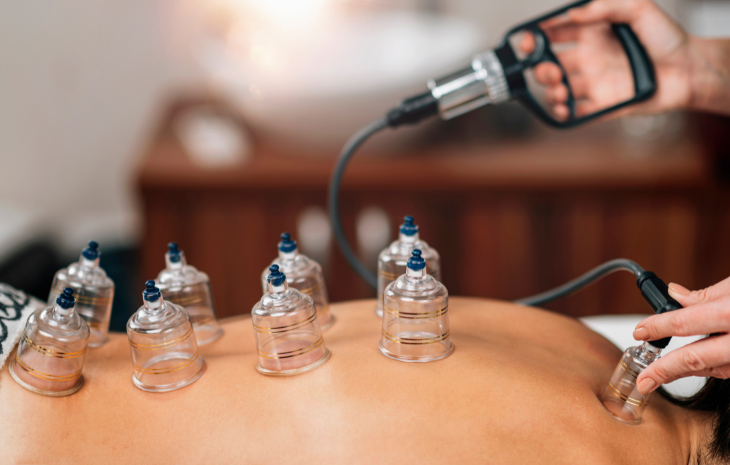
In addition to its physical benefits, cupping therapy also offers psychological benefits. The relaxation experienced during a session can help reduce anxiety and promote a sense of well-being. The therapy provides a safe space for individuals to disconnect from everyday stressors and focus on their own healing.
To sum up, cupping therapy is an alternative therapy that can be integrated into a comprehensive wellness plan. It promotes self-care, relaxation, and rejuvenation while addressing various physical, mental, and emotional concerns. By embracing this holistic treatment approach, individuals can take an active role in their health journey and experience the many benefits that cupping therapy has to offer.
Conclusion: Recap of Introduction to Cupping Therapy and Frequency Guidelines
In conclusion, cupping therapy offers a range of unique benefits and has gained popularity as a holistic treatment approach. Understanding the different types of cupping therapy and their specific advantages can help you choose the most suitable technique for your needs.
The science behind cupping therapy reveals its ability to stimulate blood flow, promote relaxation, and relieve muscle tension. By creating suction on the skin's surface, cupping therapy encourages healing and supports overall well-being.
It is recommended to consult with a qualified practitioner who can assess your individual circumstances. Generally, cupping sessions are scheduled at intervals of one to two weeks apart. However, this may vary depending on factors such as your health condition and treatment goals.
Exploring the potential health benefits of cupping therapy reveals its effectiveness in reducing pain, improving circulation, relieving stress, and enhancing athletic performance. Many individuals have experienced positive outcomes from incorporating cupping into their wellness routines.
By embracing cupping therapy as a holistic treatment approach, you can tap into its potential benefits for physical and mental well-being. It is essential to note that while cupping therapy has gained popularity in recent years, it should not replace professional medical advice or treatments when necessary.
To get started with cupping therapy or learn more about how it can benefit you personally, consider reaching out to a reputable practitioner in your area. They will be able to provide personalized guidance based on your specific needs and goals.
Remember that everyone's experience with cupping therapy may differ slightly due to individual variations in response. So it's important to communicate openly with your practitioner throughout the process to ensure optimal results.
So why wait? Take the first step towards exploring the potential benefits of cupping therapy today!
FAQs
Q: Can anyone try cupping therapy?
A: Cupping therapy is generally safe for most individuals. However, it is recommended to consult with a healthcare professional if you have any underlying medical conditions or concerns.
Q: Does cupping therapy leave marks on the skin?
A: Yes, cupping therapy can leave temporary marks on the skin. These marks are usually painless and fade within a few days to a week.
Q: How long does a cupping session typically last?
A: Cupping sessions can vary in duration, but they typically last between 15 to 30 minutes.
Q: Are there any side effects of cupping therapy?
A: While side effects are rare, some individuals may experience mild discomfort, bruising, or skin irritation after cupping therapy. These effects are usually temporary and resolve on their own.
Q: Can cupping therapy help with cellulite reduction?
A: Cupping therapy is often used as part of cellulite reduction treatments. It may help improve blood circulation and reduce the appearance of cellulite over time.
Q: Is cupping therapy covered by insurance?
A: The coverage for cupping therapy varies depending on your insurance provider and policy. It is advisable to check with your insurance company regarding their coverage for alternative therapies.
Q: Can I do cupping therapy at home?
A: While it is possible to perform cupping therapy at home using silicone cups or other tools, it is recommended to seek guidance from a trained practitioner for safe and effective treatment.

